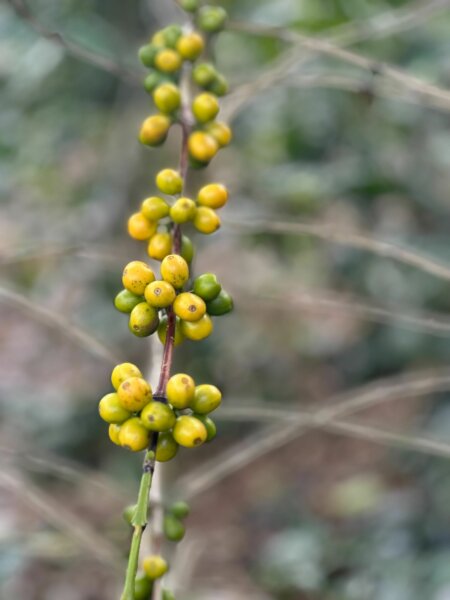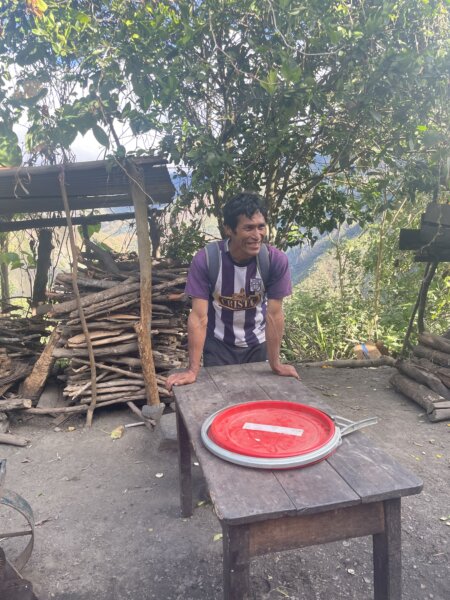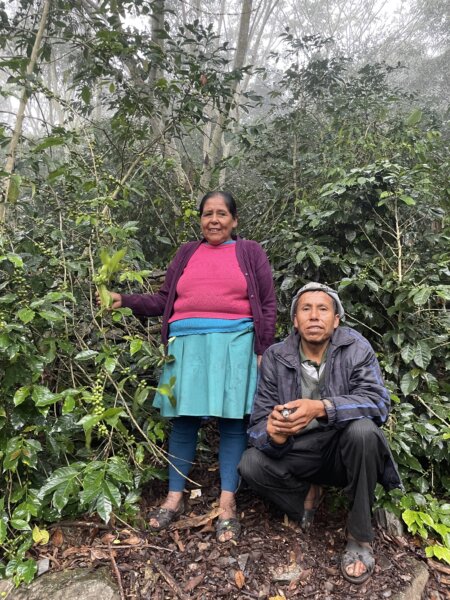The 86 point coffee: clean, sweet, and bright; complex but subtle. In specialty coffee we sometimes forget how incredible 86 point coffees are: how much goes into them, how absolutely worth it they are. We forget how vulnerable they can be to the smallest market shifts. An ever-present concern for Red Fox is to make sure that no matter what, these coffees continue to exist, that producers continue to make a living off of them. Along with that, there’s an ever-present hope that most of us in the specialty world still care about preserving these coffees and all they represent: culture, history, and a genuine path to sustainability.
Re-centering at Rio Mapacho

Last March, we went to Rio Mapacho in Cusco to see the Peru season underway. The trip was re-centering, bolstering our certainty that these coffees are everything. They are a linchpin of the industry we’ve worked together to build and the communities that grow them.
For context, inflation was peaking in March. Many of our clients were hitting very real walls on the high 2022 prices that were the reality of the last crop in Peru and beyond. We were seeing more and more clients resort to lower cost, lower quality lots from other vendors—specifically Brazil, where coffees are produced in a way that’s pretty much the polar opposite to that of the Peru smallholders we work with, but with a sprinkling of flashy profiles that could justify higher prices. There was a palpable feeling of the market in which we work hitting a wall on what they could justify paying for an 86 point coffee, no matter how it was produced or what went into it.
At Rio Mapacho, we deeply reconnected with the smallholder producers that make up our southern Peru partnerships and why their coffee is so important, so worth it.
One producer we met for the first time had a heavy bucket strapped to his back. He hiked up a high mountain for an hour and back down the other side to his house. We walked up too, and when we arrived at his farm around 2100 masl, it was lush with well-tended Bourbon farmed under shade, with such clear care put in at every stage. His family only added nutritional inputs when they could afford, which wasn’t always, especially since this was his first season partnering with us. We learned that until last year when the road was extended closer to his house, he was journeying down the steep mountainside, crossing the river, and hiking up to equal elevation on the other side—2 hours each way, 1 bag of coffee each way, twice a day. 10+ hours of arduous labor just to get his coffee out at the end of the season.
At that point we had to ask ourselves, what if his coffee cups out at 86 points? Despite his care, learning, and immense labor, it’s a very real possibility. If it does, then that 86 point coffee is a perfect representation of everything that ever made specialty coffee important and worthwhile. We need to cherish and value that coffee.
As costs of production increase (especially for remote indigenous smallholders, especially in South America) and domestic trends polarize toward cheaper coffees on the lower end and louder profiles on the higher end, these coffees are evaporating. Once we lose them, we’ll never get them back.
What makes a coffee interesting

Anyone in specialty coffee has memories of tasting that first coffee that didn’t just taste like coffee: jammy naturals, vibrant Geishas, incredibly floral Ethiopian coffees, mind-blowingly powerful Kenyan coffees. Those experiences are all very special. But, the longer we work on the development side of the industry, the more we become intrigued by and attracted to attributes like reliability, consistency, and repeatability. An articulate cup with clearly-delineated flavors delivered year over year, like what we see in Peru, is just as astonishing and precious as any mind-blowing profile.
Coffee has such beautiful nuance as a beverage—one that most of the world drinks on a daily basis, that we bond over socially. The nuances in specialty coffee go beyond the differences between labor-intensive, smallholder-run Peru and industrial mass-produced Brazil. Flavor-wise, they’re clear even within a single origin like Peru. To lose the differences between a perfect southern Peru coffee like La Convención with beautiful sweet roundness, subtle yet articulate florality like peach blossom or cherry blossom, and yellow fruit character like peach or mango, versus a coffee from the north like Namballe with powerful ripe fruit notes, bursting with berry and over-the-top character—that difference is itself incredibly special. Even when those coffees top out at an 86, they’re distinct, articulate, interesting, and intelligent. They’re singular and definitely valuable.
There’s something infinitely special about a farmer in Lares, Cusco, growing old varieties like Caturra or Typica at 1800 masl, selecting ripe fruits, fermenting and washing carefully, drying slowly, doing everything right: maximizing their potential. If what comes out of that work is an 86 point coffee, that’s beautiful.
In reality, not every farm or farmer is capable of creating a 90+ coffee. In reality, not every customer prefers 90+ coffee.
Who wins & who loses

These coffees represent not just someone’s job, but their heritage. These are farmers continuing their families’ livelihood for multiple generations. They don’t necessarily have an option to replace coffee just because buying market trends shift slightly.
In the specialty industry, we’ve spent the past 20 years preaching improvement at the farm level; that farmers could climb the ladder of upward mobility if they took the right steps. The more we continue to live up to that, the more we win: as craftspeople, as community members, as sensory professionals.
The high-end specialty field loses if we let the industry become homogenized into the 1-3 countries that are able to produce at the lowest price point. The largest estates win, giant multinationals win, indigenous smallholders lose. There will be less coffee in the world, and far less nuance.
Before green coffee prices spiked, many were worried that specialty coffee would disappear due to unconscionably low prices per pound under the C market. As prices increased, producers won for a time, while the resulting sudden imbalance made it impossible for many to win at the roaster level.
With a stabilization in progress and prices far down from their peak, we in specialty all have a chance to win: to pay good prices for the best coffees, not based on the flashiest profiles, but on the strength of their quality as a whole: the flavors produced throughout the entirety of their growth cycle, the work that went into them, the incredible people producing them, and the opportunities represented by them.
| Interested in sourcing coffee with us? Reach out at info@redfoxcoffeemerchants.com. To learn more about our work, check out our journal and follow us on Instagram @redfoxcoffeemerchants, Twitter @redfoxcoffee, Spotify, and YouTube. |
